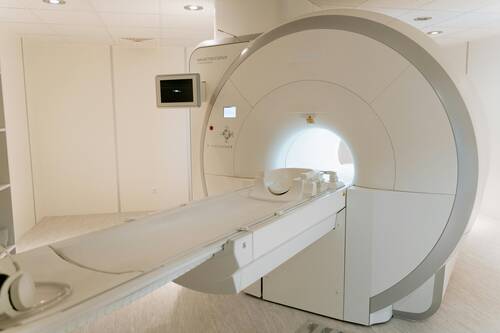
06 Nov Essential MRI Parts That Need Regular Replacement and Tips for Finding MRI Spare Parts
MRI (Magnetic Resonance Imaging) machines are complex and rely on a range of parts working together to deliver clear imaging. Due to their heavy daily use in hospitals and clinics, some parts undergo more wear and tear than others. Replacing these components on time is crucial for ensuring accurate diagnostics and patient safety. Below, we’ll explore the MRI parts that most often require replacement and offer tips on how to find quality MRI spare parts.
Coils
What Are Coils? MRI coils are essential in detecting the magnetic resonance signals generated from within the patient’s body. They act as both the transmitter and receiver of radiofrequency (RF) signals, crucial for image quality.
Why Are They Prone to Wear? Given their role in image acquisition, coils are highly susceptible to wear and tear. Issues often arise from physical damage (accidental drops or impacts) and electronic faults, as these coils are delicate. Common coil issues include signal loss and calibration problems.
Replacement Tips Regular testing and calibration help extend the life of coils, but when they need replacing, opt for Original Equipment Manufacturer (OEM) coils to maintain image quality and compatibility with your MRI system.
Gradients
What Are Gradient Coils? Gradient coils play a pivotal role in defining the spatial resolution of MRI images by creating controlled variations in the magnetic field. This component ensures that images accurately represent specific areas within the body.
Why Are They Prone to Wear? Gradient coils undergo constant electrical and thermal stress, making them susceptible to short-circuiting and overheating, especially in high-throughput settings. These issues can result in image distortion and system overheating.
Replacement Tips Regular monitoring of gradient temperature and performance can help identify early signs of wear. When replacing, select gradient coils specifically suited to the MRI model in use to ensure optimal performance.
Power Supplies
What Are MRI Power Supplies? MRI power supplies convert electrical energy to power critical components, like the gradients and RF amplifiers.
Why Are They Prone to Wear? Because MRI machines operate at high power levels, the power supply can be strained over time, leading to potential failures and fluctuations. Frequent surges and overheating can decrease the efficiency of the entire system.
Replacement Tips Look for high-quality power supplies from reliable sources. Regular testing and maintenance of power circuits can prevent sudden breakdowns and reduce the frequency of replacements.
Coolant Systems
What Are Coolant Systems? MRI machines rely on liquid helium coolant to keep the superconducting magnets at an extremely low temperature, ensuring a stable magnetic field for precise imaging.
Why Are They Prone to Wear? Over time, coolant systems experience wear due to environmental factors and inevitable leaks. Low coolant levels lead to magnet quenching, which can damage the entire MRI system if not addressed immediately.
Replacement Tips Use OEM-approved coolants, and schedule regular inspections to avoid emergencies. Some suppliers offer helium recycling programs, which can help manage the replacement of coolant systems effectively.
Tips for Finding Reliable MRI Spare Parts
- Work with Authorized Distributors Authorized distributors provide genuine OEM (Original Equipment Manufacturer) parts that match the specifications required for specific MRI models. This ensures compatibility and quality, which are essential for maintaining high imaging standards.
- Look for Third-Party Refurbished Parts Refurbished parts from reputable vendors can be a cost-effective alternative to new OEM parts. Ensure the third-party vendor is certified and has a strong warranty policy.
- Establish a Preventive Maintenance Routine An effective maintenance schedule helps predict part replacement needs, reducing downtime and ensuring the long-term health of your MRI machine.
Conclusion
By understanding which MRI components are most susceptible to wear and where to source reliable replacements, healthcare facilities can keep their MRI systems in optimal condition, ultimately benefiting patient care.
The information on MedicalResearch.com is provided for educational purposes only, and is in no way intended to diagnose, cure, or treat any medical or other condition.
Some links are sponsored. Products and services are not tested, warranted or endorsed.
Always seek the advice of your physician or other qualified health and ask your doctor any questions you may have regarding a medical condition. In addition to all other limitations and disclaimers in this agreement, service provider and its third party providers disclaim any liability or loss in connection with the content provided on this website.
Last Updated on November 6, 2024 by Marie Benz MD FAAD
